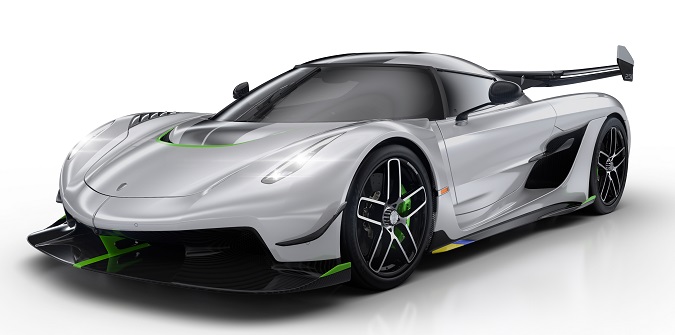

Targa, 2 Doors, 2 Seats
1280 Hp @ 7800 rpm.
5065 cm3
309.09 cu. in.
8, V-engine
Rear wheel drive,
4610 mm
181.5 in.
2030 mm
79.92 in.
1420 kg
3130.56 lbs.
| Brand | Koenigsegg |
|---|---|
| Model | Jesko (Targa) |
| Version | Jesko |
| Engine version | 5.0 V8 (1280/1600 Hp) LST |
| Year production start | 2019 |
| Vehicle type | Targa |
| Horsepower RPM | 1280 Hp @ 7800 rpm. |
| Curb weight kg -lbs total |
1420 kg3130.56 lbs. |
| Overall length mm - inch |
4610 mm181.5 in. |
| Doors | 2 |
| Engine position and orientation | Middle, Longitudinal |
|---|---|
| Cylinders | 8 |
| Position of cylinders | V-engine |
| Displacement (liters) |
5065 cm3309.09 cu. in. |
| Eng. horsepower RPM | 1280 Hp @ 7800 rpm. |
| Weight / horsepower kg/hp - hp/tons |
1.1 kg/Hp901.4 Hp/tonne |
| Weight / torque kg/Nm - Nm/tons | 0.9 kg/Nm, 1056.3 Nm/tonne
0.9 kg/Nm1056.3 Nm/tonne |
| Torque Nm RPM lb-ft RPM |
1500 Nm @ 5100 rpm.1106.34 lb.-ft. @ 5100 rpm. |
| Bore (mm in) |
92 mm3.62 in. |
| Stroke (mm in) |
95.25 mm3.75 in. |
| Compression ratio | 8.6 |
| Fuel delivery system | Direct injection |
| Fuel type | Petrol / Ethanol - E85 |
| Valvetrain | 4 |
| Engine aspiration | Twin-Turbo, Intercooler |
| Powertrain architecture | Internal Combustion engine |
| Drive configuration | Rear wheel drive |
|---|
| Steering type | Steering rack and pinion |
|---|---|
| Turning diameter m - ft |
11 m36.09 ft. |
| Rear suspension | Double wishbone |
|---|
| Wheels size | 265/35 R20; 325/30 R21 |
|---|---|
| Wheels rims | 9.5J x 20; 12J x 21 |
| Passengers seats | 2 |
|---|---|
| Trunk space max liter | cu. Ft. |
150 l5.3 cu. ft. |
| Overall length mm - inch |
4610 mm181.5 in. |
|---|---|
| Overall width mm -inch |
2030 mm79.92 in. |
| Overall height mm -inch |
1210 mm47.64 in. |
| Wheelbase mm - inch |
2700 mm106.3 in. |
| Curb weight kg -lbs total |
1420 kg3130.56 lbs. |
|---|---|
| Fuel tank liters | gallons |
72 l19.02 US gal | 15.84 UK gal |
8 CYLINDER V-Engine
https://www.thecarspec.net/components/engine/8-cylinders-v